Volvo - From 'bricks' to design icons
04 Sep 2019|14,230 views
Volvo isn't just making safe cars with uninspiring designs these days. In the last decade, Volvo has become something of a design icon, whilst still being as safe as ever.
But this didn't just happen overnight at Volvo. To find out more on the challenges and bold decisions for Volvo to be a relevant manufacturer today, we spoke to Keith Schafer, Head of Operations, Volvo Asia Pacific, and Jonathan Disley, Vice President of Design at Volvo Cars.
So, about the bricks...
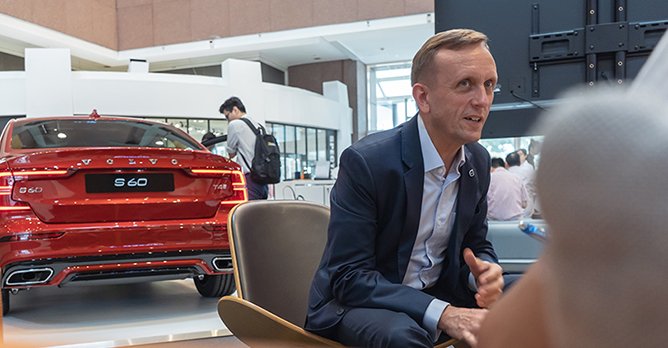
Jonathan added that the reason we recognise Volvos as such is due to the fact that most of these older Volvos continue to run today. "They're made so well," Jonathan said. "The quality is so good and the steel is so thick that they last forever. Not many remember other cars the same way they do Volvos, because they've stood the test of time."
On the topic of well-built, Jonathan shared a story in 2001 when he was in the Swedish alps on a skiing trip, driving a Volvo S60. "It was -30 degrees outside, and no one could even get in their cars as the door seals had frozen. But my S60 could - I even started my car in such harsh temperatures!"
Changing perceptions
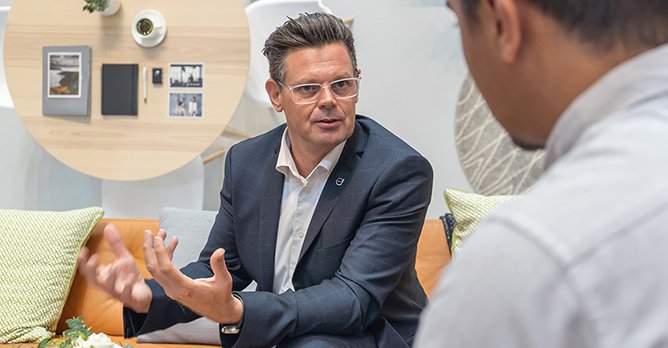
"But on the journey to finding new customers, you have to work hard in keeping your current customers, too," he added.
The Volvo XC40, according to Keith and Jonathan, is one crossover that has attracted younger, trendier customers to the brand. But they found that it attracted the brand's older customers, too.
"I wouldn't call these customers old, but experienced," Jonathan said, with a smile. "If you design a youthful product, these experienced customers would want it too, because they don't want to feel old!"
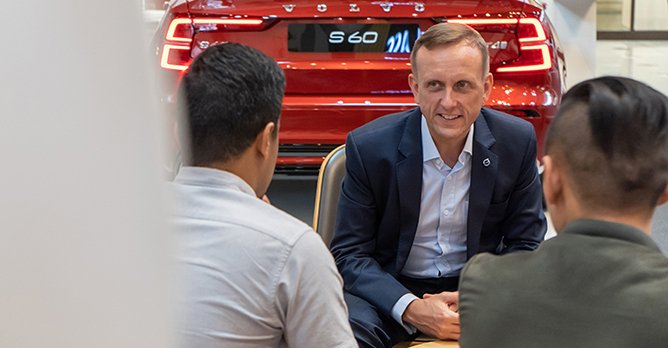
Design with safety
New Volvos are underpinned by the company's new Scalable Product Architecture (SPA) platform. Volvo says it offers significant improvements in terms of occupant safety, whilst allowing for more safety assistance systems.
Jonathan says it is due to the new SPA platform that the team of designers were able to fully exploit the car's proportions. "We can do anything we want with the platform, you can start from scratch, and you are essentially not modifying the design around the car."
According to Jonathan, the platform allows the designers and engineers to build a car around the best dash-to-axle position, fully utilising the widest points of the car from the factory.
"Normally, when you talk to the engineers when you want to incorporate such porportions, there would be issues, such as wiring harnesses or air-conditioning systems that get in the way, but with SPA, we don't have such issues, as we worked hand-in-hand to create the platform to understand the constraints from both design and engineering standpoints,” said Jonathan.
Bold decisions
But Volvo's transition to what it is today isn't an easy one. Aside from manufacturing locations, another bold decision was not offering a diesel variant for the new S60. According to Keith, it is in line with Volvo's goal towards electrification and improved safety.
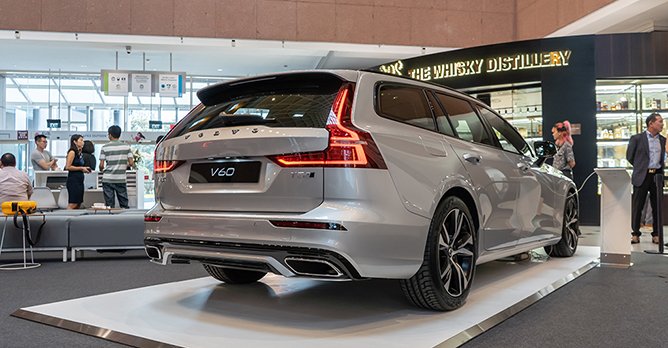
While the current Vehicular Emissions Scheme here in Singapore has effectively prevented most diesel passenger vehicles from entering our market, the European market's demand for diesels has also slowed.
This shift in demand is due to new incentives by governments in Europe to encourage car buyers to choose Plug-In Hybrid Electric Vehicles (PHEVs). With emissions looking towards getting stricter over the years, the decision Volvo made makes sense.
Made in China Volvos?
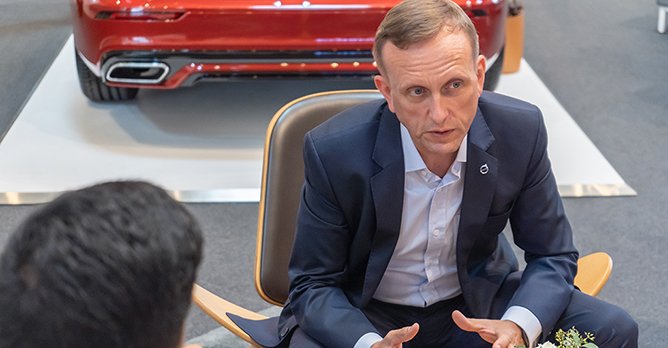
"The most important thing for us is not where we produce the car, but that we have the right designers, suppliers and quality - the latter being the most important," Keith said. "With our global operations, we have direct access to the technological abilities we need. The S60 for example is built in Charleston, U.S.A, but we have plants in Sweden, Belgium and China."
Perceptions will change, just like how Volvos went from 'bricks' to design icons. "But we are, and always will be a Swedish brand. And as a Swede, you go your own way, you don't follow the mainstream!" says Keith.
Why not watch our video review of the S60, and judge for yourself just how far Volvo's design language has evolved?
Volvo isn't just making safe cars with uninspiring designs these days. In the last decade, Volvo has become something of a design icon, whilst still being as safe as ever.
But this didn't just happen overnight at Volvo. To find out more on the challenges and bold decisions for Volvo to be a relevant manufacturer today, we spoke to Keith Schafer, Head of Operations, Volvo Asia Pacific, and Jonathan Disley, Vice President of Design at Volvo Cars.
So, about the bricks...

Jonathan added that the reason we recognise Volvos as such is due to the fact that most of these older Volvos continue to run today. "They're made so well," Jonathan said. "The quality is so good and the steel is so thick that they last forever. Not many remember other cars the same way they do Volvos, because they've stood the test of time."
On the topic of well-built, Jonathan shared a story in 2001 when he was in the Swedish alps on a skiing trip, driving a Volvo S60. "It was -30 degrees outside, and no one could even get in their cars as the door seals had frozen. But my S60 could - I even started my car in such harsh temperatures!"
Changing perceptions

"But on the journey to finding new customers, you have to work hard in keeping your current customers, too," he added.
The Volvo XC40, according to Keith and Jonathan, is one crossover that has attracted younger, trendier customers to the brand. But they found that it attracted the brand's older customers, too.
"I wouldn't call these customers old, but experienced," Jonathan said, with a smile. "If you design a youthful product, these experienced customers would want it too, because they don't want to feel old!"

Design with safety
New Volvos are underpinned by the company's new Scalable Product Architecture (SPA) platform. Volvo says it offers significant improvements in terms of occupant safety, whilst allowing for more safety assistance systems.
Jonathan says it is due to the new SPA platform that the team of designers were able to fully exploit the car's proportions. "We can do anything we want with the platform, you can start from scratch, and you are essentially not modifying the design around the car."
According to Jonathan, the platform allows the designers and engineers to build a car around the best dash-to-axle position, fully utilising the widest points of the car from the factory.
"Normally, when you talk to the engineers when you want to incorporate such porportions, there would be issues, such as wiring harnesses or air-conditioning systems that get in the way, but with SPA, we don't have such issues, as we worked hand-in-hand to create the platform to understand the constraints from both design and engineering standpoints,” said Jonathan.
Bold decisions
But Volvo's transition to what it is today isn't an easy one. Aside from manufacturing locations, another bold decision was not offering a diesel variant for the new S60. According to Keith, it is in line with Volvo's goal towards electrification and improved safety.

While the current Vehicular Emissions Scheme here in Singapore has effectively prevented most diesel passenger vehicles from entering our market, the European market's demand for diesels has also slowed.
This shift in demand is due to new incentives by governments in Europe to encourage car buyers to choose Plug-In Hybrid Electric Vehicles (PHEVs). With emissions looking towards getting stricter over the years, the decision Volvo made makes sense.
Made in China Volvos?

"The most important thing for us is not where we produce the car, but that we have the right designers, suppliers and quality - the latter being the most important," Keith said. "With our global operations, we have direct access to the technological abilities we need. The S60 for example is built in Charleston, U.S.A, but we have plants in Sweden, Belgium and China."
Perceptions will change, just like how Volvos went from 'bricks' to design icons. "But we are, and always will be a Swedish brand. And as a Swede, you go your own way, you don't follow the mainstream!" says Keith.
Why not watch our video review of the S60, and judge for yourself just how far Volvo's design language has evolved?
Thank You For Your Subscription.























